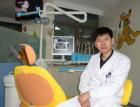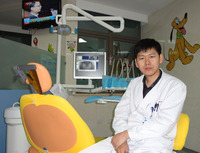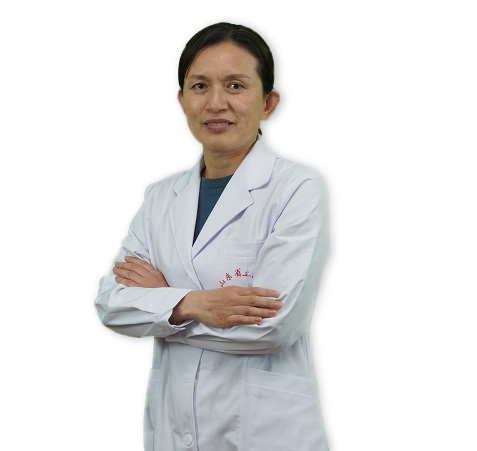Characterization of p75+ ectom

副主任医师 口腔科
中国人民解放军第三军医大学大坪医院
三级甲等Several populations of stem cells, including those from the dental pulp and periodontal ligament, have been isolated from different parts of the tooth and periodontium. The characteristics of such stem cells have been reported as well. However, as a common progenitor of these cells, ectomesenchymal stem cells (EMSCs), derived from the cranial neural crest have yet to be fully characterized. The aim of this study was to better understand the characteristics of EMSCs isolated from rat embryonic facial processes. Immunohistochemical staining showed that EMSCs had migrated to rat facial processes at E11.5, while the absence of epithelial invagination or tooth-like epithelium suggested that any epithelial-mesenchymal interactions were limited at this stage. The p75 neurotrophin receptor (p75NTR), a typical neural crest marker, was used to select p75NTR-positive EMSCs (p75+ EMSCs), which were found to show a homogeneous fibroblast-like morphology and little change in the growth curve, proliferation capacity, and cell phenotype during cell passage. They also displayed the capacity to differentiate into diverse cell types under chemically defined conditions in vitro. p75+ EMSCs proved to be homogeneous, stable in vitro and potentially capable of multiple lineages, suggesting their potential for application in dental or orofacial tissue engineering.Several populations of stem cells, including those from the dental pulp and periodontal ligament, have been isolated from different parts of the tooth and periodontium. The characteristics of such stem cells have been reported as well. However, as a common progenitor of these cells, ectomesenchymal stem cells (EMSCs), derived from the cranial neural crest have yet to be fully characterized. The aim of this study was to better understand the characteristics of EMSCs isolated from rat embryonic facial processes. Immunohistochemical staining showed that EMSCs had migrated to rat facial processes at E11.5, while the absence of epithelial invagination or tooth-like epithelium suggested that any epithelial-mesenchymal interactions were limited at this stage. The p75 neurotrophin receptor (p75NTR), a typical neural crest marker, was used to select p75NTR-positive EMSCs (p75+ EMSCs), which were found to show a homogeneous fibroblast-like morphology and little change in the growth curve, proliferation capacity, and cell phenotype during cell passage. They also displayed the capacity to differentiate into diverse cell types under chemically defined conditions in vitro. p75+ EMSCs proved to be homogeneous, stable in vitro and potentially capable of multiple lineages, suggesting their potential for application in dental or orofacial tissue engineering.
此文章内容仅代表医生观点,仅供参考。涉及用药、治疗等问题请到当地医院就诊,谨遵医嘱!
-
颌面外伤早期修复
 马福顺朝阳医院京西院区主任医师整形科
颌面外伤的定义 人体的头面部骨骼共有22块,分为颅骨和颌面骨两个部分。通俗的讲就是组成颅腔包括脑组织,或者说有机会与脑组织接触的头面部骨骼叫做颅...
马福顺朝阳医院京西院区主任医师整形科
颌面外伤的定义 人体的头面部骨骼共有22块,分为颅骨和颌面骨两个部分。通俗的讲就是组成颅腔包括脑组织,或者说有机会与脑组织接触的头面部骨骼叫做颅... -
山东大学口腔医院正颌外科
 佟冬冬山东省口腔医院主治医师颌面外科
和谐的面部比例给人以美的享受,自古就有秀色可餐的说法。然而有这么一群人,由于先天或者后天的发育异常破坏了这种和谐比例关系,对患者的身心都造成了严重的...
佟冬冬山东省口腔医院主治医师颌面外科
和谐的面部比例给人以美的享受,自古就有秀色可餐的说法。然而有这么一群人,由于先天或者后天的发育异常破坏了这种和谐比例关系,对患者的身心都造成了严重的... -
专家详细讲解儿童颌面部骨折的相关知识
 聂鑫中国人民解放军第三军医大学大坪医院副主任医师口腔科
儿童是祖国的希望,是收到大家保护的对象。由于儿童处于成长发育期,在组织解剖、生理、生物力学等方面均与成人有很大的区别。随着公路交通的飞速发展,交通事...
聂鑫中国人民解放军第三军医大学大坪医院副主任医师口腔科
儿童是祖国的希望,是收到大家保护的对象。由于儿童处于成长发育期,在组织解剖、生理、生物力学等方面均与成人有很大的区别。随着公路交通的飞速发展,交通事... -
Adipose tissue-deprived stem c
 温秀杰中国人民解放军第三军医大学大坪医院副主任医师口腔科
Adipose tissue-derived stem cells (ADSCs), which are easily harvested and show excellent pluripotency potential, have generated considerable inte...
温秀杰中国人民解放军第三军医大学大坪医院副主任医师口腔科
Adipose tissue-derived stem cells (ADSCs), which are easily harvested and show excellent pluripotency potential, have generated considerable inte... -
摘果摔下树竹竿穿颈过
 陈伟良中山大学孙逸仙纪念医院主任医师颌面外科
本报讯(记者黎蘅通讯员王海芳、张大明)近日,在河源承包了一个果园的贵州人小王,不小心从果树上摔了下来,被地上的一根竹竿横穿颈部,差点伤及要害。小王被...
陈伟良中山大学孙逸仙纪念医院主任医师颌面外科
本报讯(记者黎蘅通讯员王海芳、张大明)近日,在河源承包了一个果园的贵州人小王,不小心从果树上摔了下来,被地上的一根竹竿横穿颈部,差点伤及要害。小王被... -
牙龈不贴合牙齿怎么办
 尹新芹山东省立医院主任医师口腔科
牙龈不贴牙齿可能是因为牙齿上有牙结石,影响到牙龈的营养供给,可能会造成牙龈营养不良的现象,才会出现萎缩造成牙龈不贴牙齿的现象。可以通过洗牙的方法治疗改...
尹新芹山东省立医院主任医师口腔科
牙龈不贴牙齿可能是因为牙齿上有牙结石,影响到牙龈的营养供给,可能会造成牙龈营养不良的现象,才会出现萎缩造成牙龈不贴牙齿的现象。可以通过洗牙的方法治疗改... -
种牙会影响脸型吗
 尹新芹山东省立医院主任医师口腔科
种植牙并不会改变脸型,同时在安装时也是植入到骨组织内的,并不会对脸部造成任何伤害。但是在做完种植牙之后,后期的护理相当重要,因为是在牙髓骨上进行操作,...
尹新芹山东省立医院主任医师口腔科
种植牙并不会改变脸型,同时在安装时也是植入到骨组织内的,并不会对脸部造成任何伤害。但是在做完种植牙之后,后期的护理相当重要,因为是在牙髓骨上进行操作,...